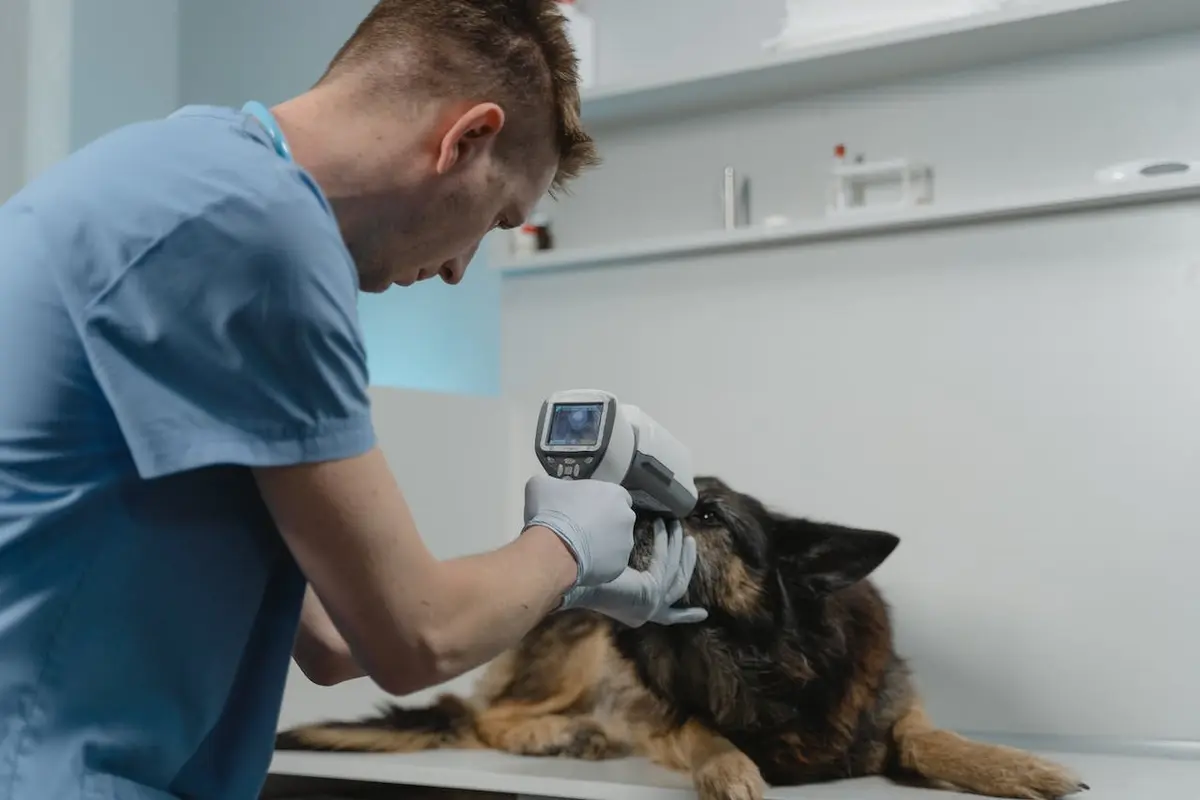As a dog owner, noticing that your dog’s head feels hot can be alarming. It’s important to understand what this symptom could indicate about your dog’s health. This article will delve into the reasons behind a hot head in dogs, including fever, illness, and other health conditions.
Recognizing the Signs of Fever in Dogs
How to Tell if Your Dog Has a Fever
Fever in dogs is a common reason for a hot head. While the normal body temperature for dogs ranges from 101 to 102.5 degrees Fahrenheit, anything above this can indicate a fever. Symptoms accompanying fever can include lethargy, loss of appetite, and unusual behavior.
Causes of Fever in Dogs
Fever can arise due to various factors such as infections, inflammation, or reaction to vaccinations. It’s a natural response of the body to fight off bacteria or viruses. If your dog’s head is unusually hot and is showing other signs of illness, it might be experiencing a fever.
Dehydration and Overheating
The Impact of Dehydration on Dogs
Dehydration is another reason your dog’s head may feel hot. Dogs regulate their body temperature through panting, and insufficient water intake can hinder this cooling process. Signs of dehydration include dry nose, mouth, and gums, as well as decreased skin elasticity.
Heatstroke in Dogs
Dogs are susceptible to heatstroke, especially in warm weather. If your dog’s head feels hot to the touch, especially in conjunction with panting, restlessness, or lethargy, heatstroke could be a concern. Immediate cooling and veterinary attention are necessary in these cases.
Other Health Concerns
Ear and Mouth Infections
Infections in the ears or mouth can cause localized heat in the head area. These infections often come with additional symptoms like discharge, bad odor, or discomfort when touching the ears or mouth.
Allergies and Inflammation
Allergies can cause inflammation in various parts of the body, including the head. This inflammation can make your dog’s head feel hot to the touch. Allergic reactions might be accompanied by other symptoms like skin irritation or gastrointestinal issues.
When to Visit the Veterinarian
Importance of Professional Diagnosis
It’s crucial to consult a veterinarian if you’re concerned about your dog’s hot head, especially if other symptoms of illness are present. Only a professional can accurately diagnose the cause and prescribe appropriate treatment.
What to Expect During the Vet Visit
Your vet may check your dog’s temperature using a thermometer and perform a thorough physical examination. They might ask about recent behavior changes, diet, environment, and any exposure to possible allergens or toxins.
Home Care for a Hot Head in Dogs
Immediate Measures to Cool Down
If your dog’s head is hot due to overheating or mild fever, you can try some immediate cooling measures. This includes providing a cool, shady place to rest, offering plenty of water, and using a damp cloth to gently cool down areas like the paws and ears.
Monitoring and Rest
Keep a close eye on your dog’s condition. Ensure they have a comfortable place to rest and recover. Avoid strenuous exercise and keep them in a cool environment, away from direct heat sources.
Preventative Measures
Keeping Your Dog Hydrated
Ensure your dog has constant access to fresh water. This is crucial for maintaining normal body temperature and overall health.
Vaccinations and Regular Check-Ups
Keeping up with vaccinations and regular vet check-ups can prevent many causes of fever and illness. Vaccinations protect against certain infections that can cause fever and other health issues.
Managing Heat and Environmental Factors
Be mindful of your dog’s environment, especially in hot weather. Never leave your dog in a parked car, and limit exposure to extreme heat. Always provide a cool, shaded area and fresh water.
Understanding Dog Physiology
Differences Between Dogs and Humans
Dogs and humans regulate body temperature differently. While humans sweat through their skin, dogs primarily cool down through panting and releasing heat through their paws and nose.
Normal Variations in Body Temperature
It’s normal for a dog’s body temperature to fluctuate slightly throughout the day. Exercise, excitement, and hot weather can cause temporary increases in temperature.
Conclusion
A hot head in your dog can be a sign of various conditions, ranging from fever and dehydration to heatstroke and infections. Understanding these signs and knowing when to seek veterinary help are crucial. Remember, regular check-ups, vaccinations, and keeping your dog cool and hydrated are key to preventing many health issues. If you notice any persistent changes or symptoms, always consult with your veterinarian for the best course of action. Your attentiveness and care can ensure your dog stays healthy and happy.


